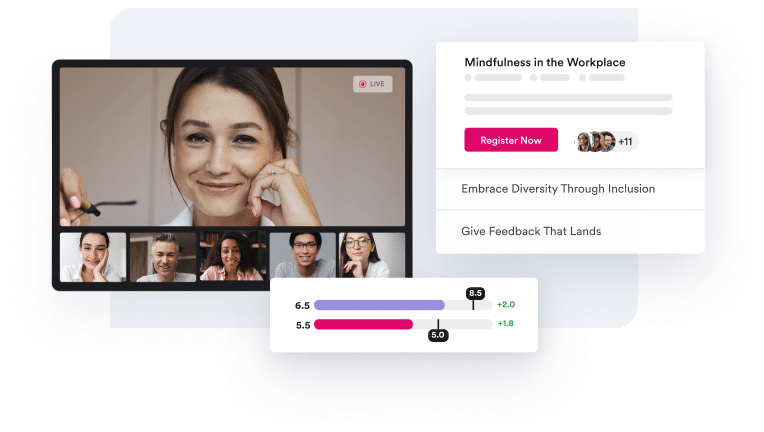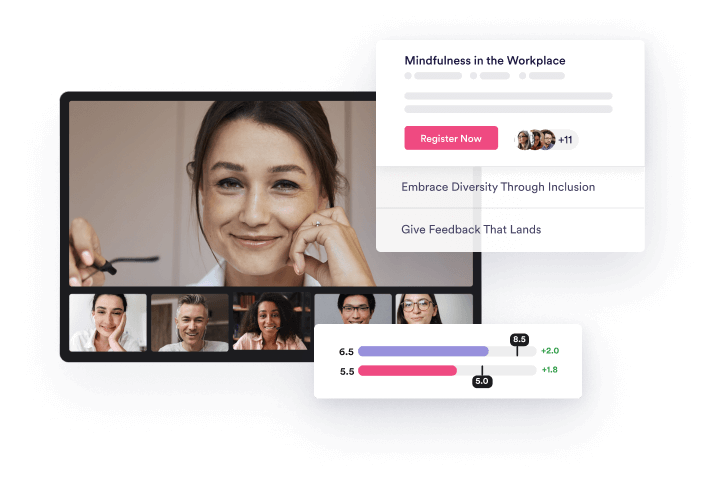Effective change management is crucial for navigating through organizational transitions smoothly. One of the most critical factors that determine the success of change management is the leadership skills of the individuals responsible for leading the change. Strong leadership skills are essential for creating a vision, inspiring and engaging stakeholders, and executing strategies that drive successful change. Here are a few strategies for supporting effective leadership training in change management to ensure your team’s success.
Developing Leaders through Change Management Leadership Training
Change management refers to the process of identifying, planning, and implementing changes within an organization. It involves considering the impact of changes on various stakeholders, determining the resources and support required, and creating a plan for transitioning to the new state of operations.
Successful change management requires strong leadership skills. Leaders who are trained in change management are better equipped to manage the complexity and uncertainty that comes with implementing change. They are also able to provide a clear vision, establish goals and objectives, and communicate effectively with stakeholders to build buy-in and support for the change.
Additionally, trained leaders have the ability to identify and mitigate potential risks and challenges associated with change, and to develop contingency plans to minimize disruption to the organization. Overall, leaders who are trained in change management are better equipped to lead their organizations through multiple transition times, resulting in improved organizational leadership and sustainable growth.
While organizations see the value that change management brings, delivering an effective program is quite challenging. A recent McKinsey survey of 3,199 executives around the world found that only one change transformation in three succeeds. L&D leaders who deliver an effective change management training strategy understand the values and narrative that are important to enable individual and collect change. Here are a few training strategies to produce effective growth and understanding for your teams.
6 Strategies for Leadership Training in Change Management
1. Provide Formal Change Management Training Programs
Formal training programs are designed to provide individuals with a structured and comprehensive approach to understanding the complexities of change and how to manage it successfully. These lessons provide a solid foundation of theoretical knowledge and concepts of change management. This includes understanding the different types of change, the stages of the change process, and the roles and responsibilities of stakeholders in change management.
Formal change management learning sessions also provide individuals with a range of tools and techniques that can be used to manage change effectively. These can include critical analysis, risk assessment, communication planning, project management, and more.
Online live cohort-learning courses
You know how hard it can be to schedule meetings due to calendar conflicts. Online live cohort-learning courses give employees a way to learn at their own pace and at times that make sense according to their schedule. These formats give each individual autonomy and provide structure to your intended goals and main takeaways from each change management course.
Workshops
Interactive learning is a great way to get individuals involved and engaged in achieving team goals. Consider hosting a workshop to get everyone together and promote interactive sessions. Popular workshop activities can include group discussions, role-playing exercises, and simulations. These enable participants to apply their learning in a safe and supportive environment and receive feedback from their peers and trainers.
Coaching
No one has a one-and-done way of learning, especially as it pertains to improving work skills on a daily basis. Applying helpful coaching models for ongoing learning support provides access to additional resources such as online communities and reference materials. This ensures that individuals can continue to develop their knowledge and skills in change management long after the training program has ended. Giving each manager the tools and expertise to guide each employee helps improve productivity and engagement over time.
2. Gather Constructive Feedback During Each Change Proposal
Feedback is an essential component of effective change management. It plays a critical role in helping leaders to understand how their actions and decisions impact others, identify areas for improvement, and make course corrections to ensure successful change. In the context of change management, feedback can be given and received in various ways, including one-on-one conversations, group meetings, surveys, and evaluations.
For leaders, giving and receiving feedback is crucial to developing their skills in change management. Here are a few ways that impact delivering expectations and gaining insights through each change proposal for L&D leaders and each manager.
Identify areas of improvement – candid feedback can help leaders identify gaps in their leadership style and approaches. Maybe they are only looking at it from their point of view, and need to take a step back to see the big picture. Leaders open to feedback become more self-aware and develop ways to engage their teams with a shared sense of fulfillment and commitment to knowledge sharing.
Build unified trust – when leaders actively seek feedback and respond to it, they demonstrate their willingness to listen and collaborate, which can help to build stronger relationships and improve the likelihood of successful change.
Improve decision-making and communication – By receiving feedback from a variety of sources, leaders consider multiple perspectives and make decisions that are more likely to succeed. By considering how their messages are received, leaders can adjust their communication style and approach to better engage each participant and build trust for implementing change.
3. Coaching and Mentoring for Your Leadership
No one can keep pouring out advice, guidance, and strategy if they are not fulfilled and energized themselves. A lot of times we can overlook this in those who are a part of leadership and management teams. Each person must feel like they are improving and headed toward common goals between their organization and those who they are in charge of leading.
Coaching and mentoring are powerful tools that can be used to help leaders develop their change management skills. An HBR survey found that that the changing nature of work requires a more personalized approach to leadership skills development, and 88% believe there is a unique value to this more personalized approach. These activities can take many forms, including one-on-one coaching sessions, group coaching, peer mentoring, and others.
Giving your leadership team outlets for learning new skills provides a safe and supportive environment for leaders to receive feedback on their change management performance and hold themselves accountable for achieving their goals. Because change management requires a specific range of skills, L&D leaders can focus on topics like stakeholder engagement, cross-functional communication, and efficient decision-making to start.
When leaders feel engaged and informed, they will model behaviors that their teams can adopt, creating agents for change with individual contributors. Some of the most beneficial coaching efforts include one-on-one coaching, group coaching, peer mentoring, and leadership development programs.
4. Promote a Safe Environment for Change Management Practice
Creating opportunities for leaders to practice leading change in a safe environment is crucial for developing their skills and confidence. When leaders are able to practice leading change in a controlled and supportive environment, they can experiment with different strategies, receive feedback, and learn from their successes and failures. L&D leaders can initiate a few common change management practice activities like simulation exercises, team-building demonstrations, and pilot projects to get managers thinking about how change proposals can be communicated and adopted with their teams.
Let’s run through scenarios to describe how creating opportunities for leaders to practice leading change has been effective in various work settings.
- A large manufacturing company created a simulated change management scenario for its leaders to practice their skills. This exercise helped leaders to identify gaps in their skills and develop strategies for overcoming them. As a result, the company saw improved buy-in and success rates for its change initiatives.
- A nonprofit organization implemented a pilot project to test out a new fundraising strategy. The leaders involved in the pilot project were able to practice their change management skills in a low-risk environment and received feedback on their performance. This helped them to refine their approach and successfully implement the new fundraising strategy on a larger scale.
- A healthcare organization implemented team-building exercises for its leaders to develop their collaboration and communication skills. These exercises helped leaders to build relationships and trust, leading to improved stakeholder engagement and more successful change initiatives.
5. Supporting Continuous Improvement for Leaders
Leaders need to be able to adapt and respond to frequent business changes and agile markets to support successful growth and development. By continuously improving their skills in change management, leaders can better anticipate and respond to new challenges and team dynamics.
One way for leaders to continuously improve their change management abilities is by seeking feedback from company stakeholders and team members. Feedback can help leaders to identify areas where they need to improve and learn from their mistakes. It can also provide insight into the perspectives of others, helping leaders to better understand the needs and concerns of each team member.
Leaders looking to learn more can attend conferences or workshops on change management, read books or articles on the topic, or seek out mentoring or coaching from experienced leaders. By staying up-to-date on the latest trends and best practices in change management, leaders can continue to refine their skills and improve their performance. By taking calculated risks and trying new strategies, leaders can learn from their successes and failures and continue to improve their skills over time.
6. Integration into Leadership Development
Integrating change management into leadership development programs and succession planning can provide several benefits for organizations. By developing change management competencies, providing training and resources, incorporating change management into performance evaluations, and including change management in leadership simulations, organizations can ensure that leaders and potential successors are equipped to successfully lead change initiatives.
Change management competencies – could include skills such as stakeholder engagement, communication, and strategic thinking, all of which are essential for successful change management.
Leadership training and resources – involve workshops, online training, or access to articles or books on change management.
Incorporate change management into performance evaluations – helps to reinforce the importance of change management and provide feedback on areas for improvement.
Leadership simulations that incorporate change management – organizations can provide leaders with opportunities to apply their skills in a realistic and controlled environment.
Hone’s Provides Effective Change Management Training to Leaders
The team at Hone connects the Bersin Agile Change Model to training high-performing leaders and coaches. This model explains how agility and continuous learning come into play throughout the change management process and how each stakeholder might contribute and evaluate their leadership skills.
To promote change adoption and support change agents on your team, leaders need to understand common reactions to change such as resistance, compliance, and commitment. They also must know how to speak to each individual to instill a commitment to change, including appealing to the head, heart, and gut instincts of each person.
Hone’s all-in-one learning platform provides leaders with the effective training strategies described above and gives structure and reporting capabilities to L&D leaders and stakeholders. With a comprehensive view of change management learning programs and performance metrics, teams can track their progress, participate in coaching and mentoring sessions, and retain critical knowledge to be a guide through organizational change.










